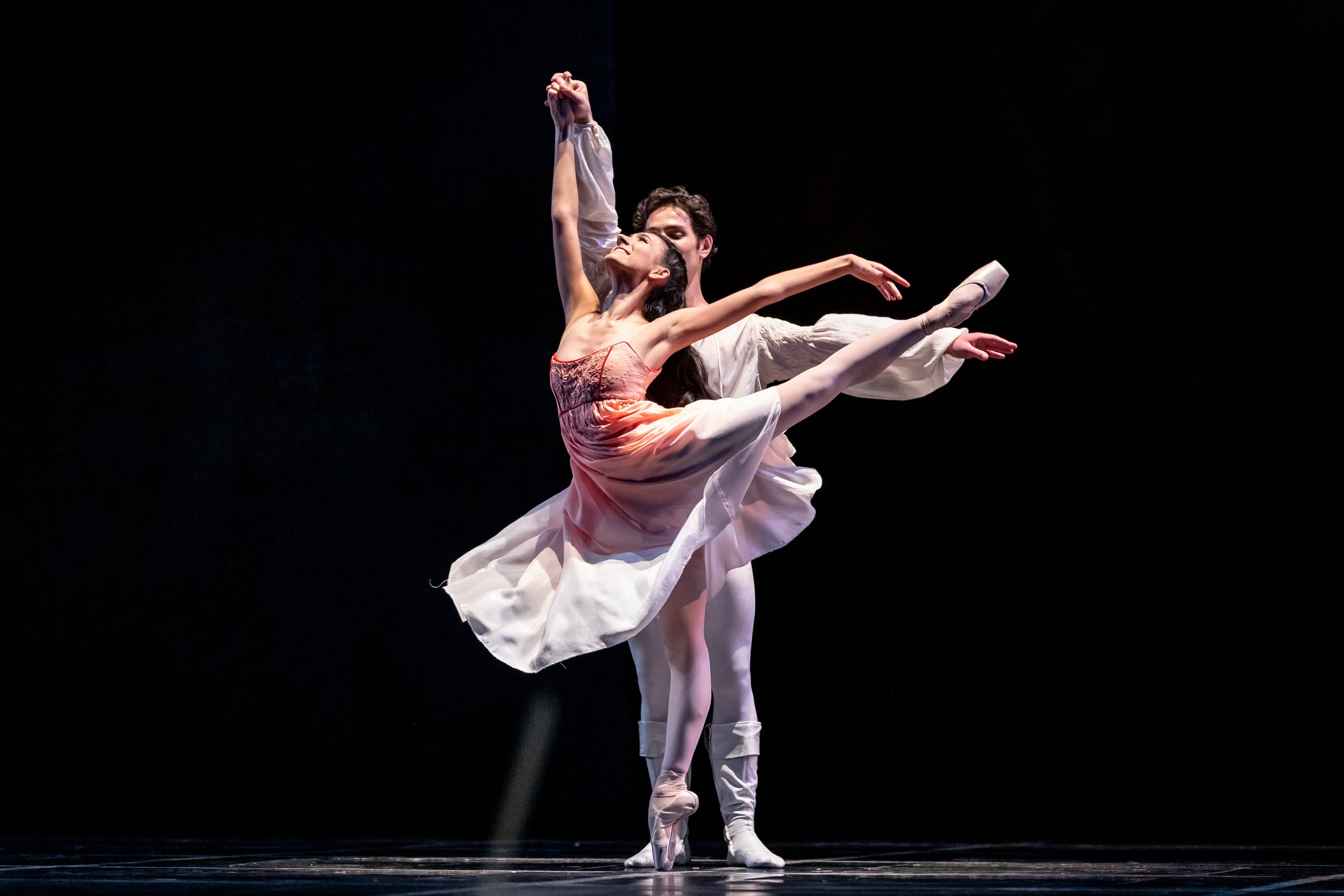Interview: San Francisco Ballet Principal Dancer Jasmine Jimison
San Francisco Ballet in Tomasson's Swan Lake // © Lindsay Thomas
By Kate Zaliznock
In an era where we're constantly glued to screens and desperate to capture (rather than experience) every moment with our phones, there is something ethereal about experiencing art from a pre-technology-obsessed culture. This might explain why ballet continues to captivate and expand its audience. The San Francisco Ballet, the oldest professional ballet company in the United States, has been drawing in enthusiasts since its founding in 1933. As the first company to perform both The Nutcracker and Swan Lake in America, it has a long history of being at the forefront of both innovative and classical programming.
The San Francisco Ballet resides in the War Memorial Opera House, a setting fit for the company's exceptional status with its gilded sculptures, soaring coffered ceilings, and grand centerpiece chandelier. Recently, I had the privilege of attending this season's final encore performance of Swan Lake, featuring principal dancers Misa Kuranaga as Odette-Odile and Angelo Greco as Prince Siegfried. With choreography by Helgi Tomasson (based on Marius Petipa and Lev Ivanov), the performance was truly stunning, blending classical stage design with modern touches, and complemented by an exquisite orchestral performance.
I interviewed San Francisco Ballet’s newest principal dancer, Jasmine Jimison, who first joined the company’s school at age twelve. Jimison began figure skating at four, and it was her instructor who recommended dance to enhance her training. Now, at 22, Jimison has quickly become a standout talent, taking center stage as Juliet in the company's production of Romeo and Juliet and the eponymous role of Giselle.
Jasmine Jimison in Tomasson's Swan Lake // © San Francisco Ballet, photo by Lindsey Rallo
Of her schedule, Jimison tells me, “Every day is kind of different, but during our off-season we’ll rehearse for about six months in the summer and fall without performing much. We might go on tour a little bit, but during that time we’re just rehearsing the ballets that we’ll do during the season. We’ll take class in the morning at 10 and then have up to six hours of rehearsal a day, depending on what you’re dancing. Sometimes it might be less, sometimes it might be more. During the actual performing season, we’ll have class at 10 or 11:30, then maybe a few hours of rehearsal, and then have performances in the evening at 7:30 or 8, and then we’ll be done with the day by about 10:30.”
Maintaining such a demandingly athletic career requires her to carefully balance all elements of her health: “It’s a lot of work, dancing alone. So for me, I try to rest as much as possible, because I am so exhausted after dancing six to eight hours a day. So I stretch, and take care of my body as much as possible. But I also do a little bit of Pilates to keep up my core strength without putting too much extra strain on my body. You’re lying down most of the time, so you’re not actually putting more impact on your bones and muscles, but you’re still strengthening. As for mental health, I try to meditate a little bit. I feel like that really calms me down and gets me to that zen state where I’m not so overstimulated—because ballet can be very stimulating.”
Her journey on the stage has had many highlights: “My favorite role that I’ve performed so far is Juliet. That was an incredible experience for me. It’s everything I love doing because I love telling a story onstage, and Romeo and Juliet is such a dramatic story; there is so much acting, and I feel like I can really get into that, and the movement quality for the role is more natural to me because it’s more flowy, and I think that’s more my dancing style. I just had a really wonderful time dancing—I felt so present on the stage, and the energy from the other cast members was incredible.”
Jasmine Jimison and Angelo Greco in Tomasson's Romeo & Juliet // © Lindsay Thomas
Jimison is also drawn to the composer Philip Glass, saying, “Every piece of music of his that I’ve heard in a ballet has been inspirational to me. I was lucky enough to perform to his music a few years ago, and it was one of my favorite experiences on stage. The way the music swells and builds in addition to the addicting melodies make his compositions so satisfying to dance to. He truly is a master of his craft.”
Jimison is very excited about next season’s performance of Manon, first choreographed by Sir Kenneth MacMillan in 1974 with music composed by Jules Massenet: “It’s never been performed in San Francisco before. I don’t know if I will get to perform that, but it’s definitely something I would love to do. It is actually similar to Romeo and Juliet—not necessarily the plot, but the dancing style, and lots of dramatic acting.”
As for after the show? Jimison says, “I go home, take the makeup off, make a second dinner, and then try to decompress and go to bed as soon as I can.” Wise words from one of the city’s most talented creatives.



